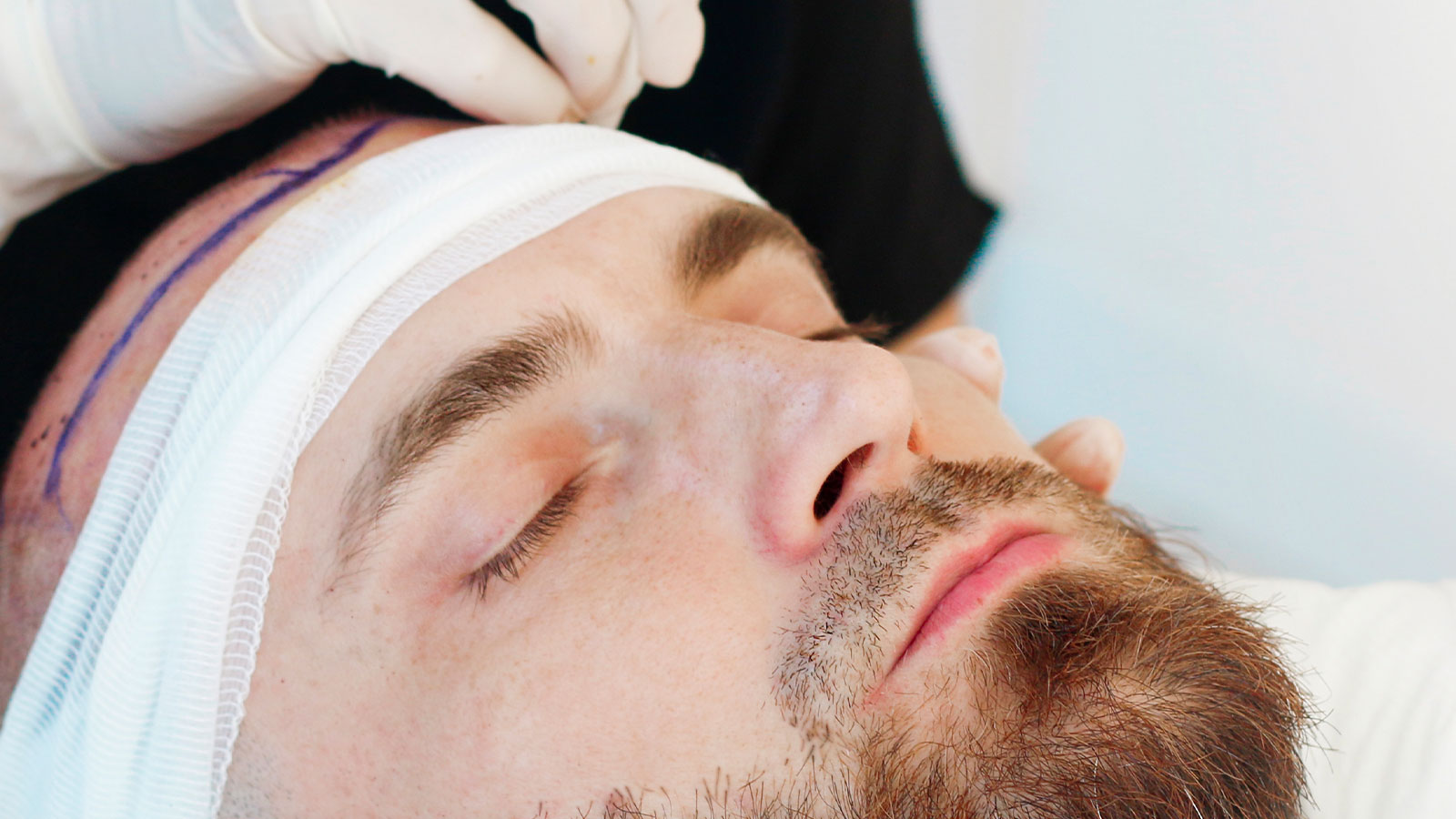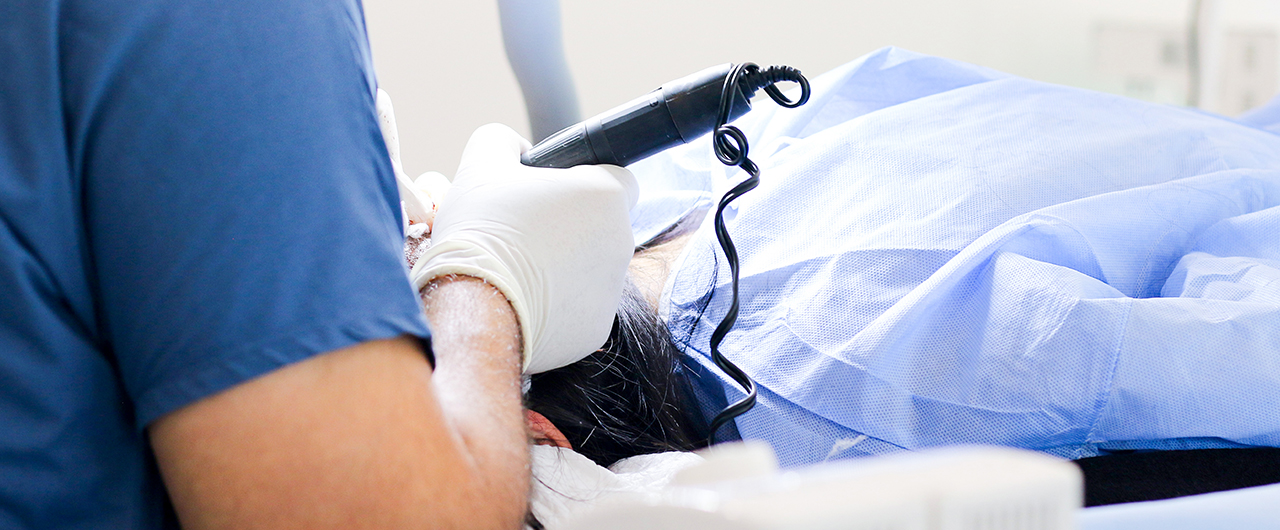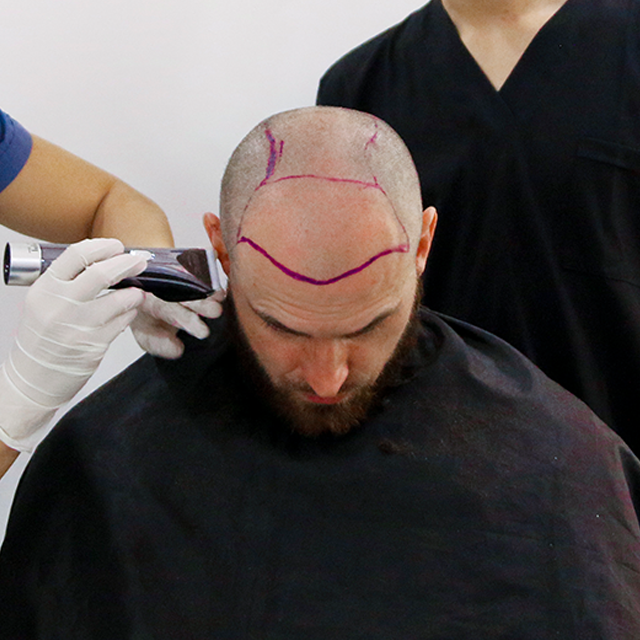What is Hair Transplantation?
Hair is extracted from one part of the scalp (the “donor site”) and transplanted to any other (the “recipient site”). The technique is designed to treat male sample baldness; however it could also repair eyelashes, eyebrows and beard hair.

What are the advantages of Hair Transplant in Turkey?
Turkey has become a popular destination for Hair Transplant due to several advantages:
- Cost: Hair Transplant procedures in Turkey are generally less expensive than in other countries, especially in Western countries.
- Experience: Turkey has a large number of highly skilled and experienced Hair Transplant surgeons who have performed thousands of procedures.
- Technology: The clinics in Turkey are equipped with the latest technology and equipment to perform Hair Transplant with high precision and minimal discomfort.
- Quality of care: Many clinics in Turkey offer all-inclusive packages that include pre- and post-operative care, as well as accommodation and transportation.
- Recovery time: The recovery time for Hair Transplant in Turkey is relatively short and patients can go back to their normal life soon after the surgery.
- Tourism: Turkey is known for its tourism and many people combine Hair Transplant with their holiday, have surgery, and enjoy the country while recovering.

What are the risks of Hair Transplant?
Hair Transplant is a surgical procedure, and like any surgery, it carries certain risks. Some of the potential risks and complications of Hair Transplant include:
- Infection: Although rare, there is a small risk of infection at the site of the incision or the transplanted hair follicles.
- Bleeding: There may be some bleeding during or after the procedure, but this is usually minimal.
- Scarring: Scarring can occur at the donor site, particularly if the strip harvesting method is used.
- Numbness: There may be some temporary numbness or tingling in the scalp or ears after the procedure.
- Unsatisfactory results: In some cases, the results of the Hair Transplant may not be as desired, and the hair may not grow as thickly or as evenly as expected.
- Shock loss: A temporary shedding of existing hair can occur after the transplant.
- Allergic reactions: Some patients may develop an allergic reaction to the anesthesia or other medications used during the procedure.
- Swelling: Swelling of the forehead, eyes, and scalp can occur after the procedure and usually subsides within a week.
What are the Hair Transplant options in Turkey?
There are two main Hair Transplant options in Turkey: Follicular Unit Transplantation (FUT) and Follicular Unit Extraction (FUE).
FUT
FUT, also known as “strip harvesting,” involves removing a strip of hair-bearing scalp from the back of the head (the donor site) and then transplanting individual hair follicles from that strip to the thinning or balding areas of the scalp (the recipient site). The strip is then stitched closed, leaving a thin scar.
FUE
FUE, involves removing individual hair follicles from the donor site (usually the back of the head) using a small punch tool, and then transplanting them to the recipient site. The advantage of FUE is that it leaves minimal scarring and recovery time is shorter than FUT.
Both options are widely used in Turkey and are considered to be successful in restoring hair growth. The choice between FUT and FUE depends on the individual’s condition, the amount of hair loss, the desired outcome, and the surgeon’s recommendation.
In addition to these two options, some clinics in Turkey may offer advanced techniques such as DHI(Direct Hair Implantation), Sapphire FUE and Body Hair Transplant (BHT).
Direct Hair Implantation (DHI)
In this method, the hair follicles are extracted one by one using a special instrument called the DHI implanter pen, and then immediately transplanted to the recipient area.
Sapphire FUE
This method uses a sapphire-coated punch to extract hair follicles during the FUE process, which is believed to reduce trauma to the follicles and increase their survival rate.
Body Hair Transplant (BHT)
This method uses hair from other parts of the body, such as the chest, beard, or legs, to transplant to the scalp. It is an option for people with limited donor hair on their scalp.

Who is a good candidate for Hair Transplant?
A good candidate for a Hair Transplant is someone who:
- Has a stable hair loss pattern: The best candidates for Hair Transplant have a stable hair loss pattern, meaning that their hair loss is not likely to continue to progress.
- Has enough donor’s hair: The Hair Transplant procedure requires a sufficient amount of hair in the donor area to be transplanted to the recipient site.
- Have realistic expectations: Good candidates for Hair Transplantation have realistic expectations about the results of the procedure and understand that the transplanted hair will grow in a natural and gradual way.
- Is in good overall health: Good candidates are in good overall health, both physically and mentally. They should have no serious medical conditions or illnesses that may increase the risk of complications.
- Is willing to follow post-operative care instructions: Good candidates are willing to follow the post-operative care instructions given by the surgeon, to ensure the best possible results and minimize the risk of complications.
What should be done before Hair Transplant?
Before undergoing a Hair Transplant, there are some matters that have to be achieved to put together:
- Timetable consultation with a certified Hair Transplant healthcare professional to discuss your hair loss situation, your dreams for the manner, and determine in case you are a candidate for the system.
- Your medical professional may additionally require a scientific evaluation to make sure that you are in appropriate typical health and that there aren’t any underlying medical situations that could increase the chance of complications.
- If you are taking any medicines, tell your health practitioner. Some medications, such as blood thinners, can also want to be discontinued before the technique.
- It’s essential to stop drinking alcohol and smoking as a minimum a week before the method, as they could increase the danger of bleeding and slow down the healing.
- In case you are having the FUE method, you will need to shave your head in the area where the hair may be taken from. Moreover, if you are having the FUT method, you will need to shave the complete area wherein the procedure will be accomplished.
- If you are visiting for the technique, ensure to arrange for transportation and lodging.
- Observe any pre-operative instructions supplied by way of your health care provider, along with warding off sure foods or medicines before the technique.
- It is crucial to have realistic expectations about the effects of manners and remember the fact that the transplanted hair will grow in a herbal and gradual way.

How is Hair Transplant performed?
Hair Transplant is a surgical procedure that involves putting off hair follicles from one location of the scalp (called the “donor site”) and transplanting them to another area of the scalp (known as the “recipient site”).
There are principal strategies for Hair Transplant: Follicular Unit Transplantation (FUT) and Follicular Unit Extraction (FUE).
FUT, also referred to as the “strip technique”, includes eliminating a strip of skin from the donor site, after which dissecting it into man or woman hair follicles. Those hair follicles are then transplanted to the recipient site. This method leaves a scar on the donor site.
FUE, then again, entails putting off individual hair follicles from the donor site in the use of a specialized device, and then transplanting them to the recipient site. This procedure does not leave a scar at the donor site, but there may be small dots at the scalp in which the hair follicles have been removed.
Each FUT and FUE is done under local anaesthesia and may take several hours to finish. After the procedure, the transplanted hair will fall out, but new hair will begin to develop within the recipient site within a few months.
Hair Transplant growth timeline
The growth timeline for Hair Transplant can range depending on the person and the form of procedure performed. But the following time frame presents a basic concept of what to anticipate:
- Right after the procedure: The transplanted hair may be bruised, swollen, and can have scabs. The donor region may have a few discomfort and swelling and may be included with a bandage or dressing.
- Within the first week: The swelling and bruising will begin to subside, and the scabs will begin to fall off, revealing the new hair follicles.
- Within the first 2–3 weeks: The transplanted hair will fall out, that manner is called “surprise loss.”
- Within the first 3–4 months: The new hair will start to grow in the transplanted location, at first it could be very thin and slightly seen.
- Within 6–9 months: The new hair will keep growing and thicken. It will be extra visible and will start to combine with the surrounding hair.
- Within 12 months: The very last effects may be seen, and the new hair will have reached its full growth capability.
The growth timeline can vary from person to person and the effects can change by elements which include age, general health, and the volume of hair loss.
Additionally, the post-operative instructions provided via the physician, which include averting sports, taking medicinal drugs, and keeping off exposure to daylight, make sure the nice feasible results and reduce the risk of complications.

How long does Hair Transplant take in Turkey?
The period of time for a Hair Transplant process in Turkey can vary depending on the individual and the kind of procedure done, but typically it takes several hours to complete.
Follicular Unit Transplantation (FUT) process can take 4–8 hours, depending on the quantity of grafts to be transplanted.
Follicular Unit Extraction (FUE) technique can take 6–10 hours, depending on the range of grafts to be transplanted.
The Direct Hair Implantation (DHI) is a more advanced approach and may take longer, as much as 12 hours, depending on the quantity of grafts.
How long does Hair Transplant last?
A Hair Transplant is a permanent solution to balding. Hair follicles that are transplanted are resistant to balding due to their genetic makeup, so once they are established, they will keep growing for the rest of the recipient’s life.
What should be done After Hair Transplant treatment?
After a Hair Transplant procedure, some general post-operative instructions include:
- Keep the transplanted area clean and dry for the first few days. Your surgeon will provide you with specific instructions on how to care for the transplanted area, such as how to clean the area and when to apply any topical medications.
- Keep your head elevated for the first few days after the procedure to reduce swelling.
- Avoid strenuous activities for the first few days after the procedure, including exercising, lifting heavy objects, and bending over.
- Avoid exposure to sunlight, or wear a hat or scarf to protect the transplanted area from UV rays.
- Take any prescribed medications as directed by your surgeon.
- Attend any follow-up appointments with your surgeon as scheduled, to monitor the healing process and ensure that the transplanted hair is growing properly.
- Avoid certain hairstyles, such as tight braids or ponytails, which can put tension on the transplanted hair.
- It’s important to be patient, as the transplanted hair will take time to grow and the final results may not be visible for several months.
